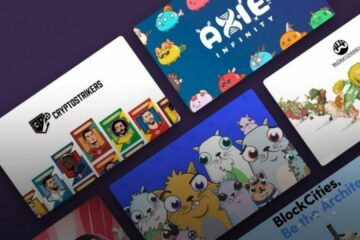While the debate about NFTs, blockchain & Co is classified by some as pure speculation, others see it as a digital revolution. This digital revolution has long since dawned and NFTs have become lighthouses whose radiance also appeals to a less technically interested target group. How sustainable this development will be remains to be seen? However, many companies, artists and “creators” wonder what the digital revolution means for them.
What are NFTs?
NFTs (Non-Fungible Tokens) simply represent ownership of an object. An example of a fungible asset is money, where units can easily be exchanged for the same value. However, if something is non-fungible, this exchange is not possible because it has unique properties.
Technically, NFTs exist on the Ethereum blockchain. The ERC-721 standard is used to create an NFT. According to the ERC-721 standard, NFTs must meet the following properties:
Unique: Each token has a unique and permanent identifier in the ERC-721 Smart Contract. When its identifier is paired with a contract address, the NFT becomes a unique, fully qualified asset on the Ethereum blockchain that can be assigned to a specific owner.
Transferable: ERC-721 contains standardized functions that only allow the owner of an NFT to transfer it. These functions are built into the smart contract and the parties can be confident that the smart contract will execute the transactions correctly as the smart contract’s code can be verified.
Because of these properties, NFTs can be used to claim and transfer ownership of any unique good.
The value of the token
The value of an NFT results from supply and demand or, to put it another way, from what other buyers are willing to pay for it. NFTs have no intrinsic material value and derive their value from an artificial shortage. In addition, the value of an NFT depends on other factors, such as the awareness and importance of the issuer or the visual representation of the token. Ultimately, however, artificial scarcity is always a main driver of the value of an NFT.
Potential of NFTs beyond speculation
We believe that NFTs have much greater potential than many think. Apart from the purely speculative value due to an artificial shortage, NFTs can solve important problems. Using NFTs, for example, the authenticity of products can be guaranteed and checked. In this way, brands, producers and retailers can protect entire industries from counterfeiting and offer designers added value for their creative work.
collectID makes use of this and protects the authenticity of physical products by linking NFTs with NFC chips. For this purpose, encrypted NFC chips from collectID are integrated directly into products, giving each of these products a unique ID. This ID is stored in the form of an NFT on the Ethereum blockchain and then assigned to the rightful owner, buyer of the product. In this way, every NFT in the collectID system represents a suitable physical product without a doubt.
Enable Consulting, a management consulting firm for the tech and entertainment industry, expects non-fungible tokens (NFTs) to become mainstream by 2022 and claims that every tech and media company must adopt this innovation.
In its Technology and Media in 2022 Outlook, an annual report that predicts key trends and offers insights into the technology, Activate showcased its take on NFTs, claiming that these digital collectibles will continue their way into a wider range of industries.
“As consumer time moves to digital experiences and interest in the Metaverse grows, we believe every technology and media company will need an NFT strategy,” the company said.
NFTs are digital assets that act as a deed of title to a unique digital item. According to Activate, NFTs’ value proposition is to validate the ownership and authenticity of digital assets. NFTs can also be programmed using smart contracts, so developers can receive downstream royalties every time an NFT changes hands.
As NFT sales climb to new heights, 2021 was the breakthrough year for these assets. While sales of NFTs for full year 2020 were just under $ 95 million, per DappRadar data, that number rose to $ 1.2 billion in the first quarter, to $ 1.3 billion in the second quarter and $ 1.3 billion in the third Quarter of 2021 to a whopping $ 10.7 billion.
According to Activate, the surge coincides with a significant surge in NFT interest and buying activity among US traders. According to reports, 73% of US NFT retailers made their first purchase this year.
Added to this is the fear of possible monetary devaluation due to the high level of debt in the wake of the pandemic, which is currently bothering many people. Cryptocurrencies and NFTs can therefore be understood as a means to keep savings safe from such a scenario. And then there are the speculators who hope that their NFTs will appreciate in value in the future.
It remains to be seen whether the sometimes very high sums are justified for some NFTs. Because in order for their value to remain stable or even increase, enough people have to believe in them.
Where can I buy NFTs?
OpenSea is one of the largest NFT marketplaces.
NFTs are now offered on many trading venues on the Internet. The best known are OpenSea, Rarible and Mintable. To buy NFTs, in most cases you need a cryptocurrency, which in turn has to be kept in a digital wallet. Since most NFTs are currently still based on the Ethereum blockchain, you need the associated currency ether (ETH) to buy them. You can find detailed instructions on how to buy ether here.
Create and sell an NFT: that’s how it works
If you now feel like creating an NFT work of art yourself, you can easily do this via a trading platform such as OpenSea or Rarible. The “Create” function can be found in the menu at the top on both sides. All you have to do here is upload a compatible file such as PNG, GIF, WEBP, MP4 or MP3, which is then automatically converted into an NFT.
You can sell your works directly via the platforms. Please note, however, that you will need a digital wallet for both uploading and selling.
Criticism of NFTs
It is no longer a secret that the technical processes behind a blockchain consume an incredible amount of electricity. The University of Cambridge estimates that Bitcoin alone consumes more electricity per year than the whole of the Netherlands. That’s because of all of the hardware required for the above-mentioned peer-to-peer network. Depending on the type of power generation, this of course also results in high C02 emissions. NFTs are no exception.
British artist and technologist Memo Akten spent several months looking at the electricity used to create and sell NFTs. In the approximately 18,000 NFT works of art that he analyzed; the average power consumption is said to have been 340 kWh. This corresponds to almost ten percent of the average annual electricity consumption per household in Germany. According to the files, an NFT would have a CO2 footprint of 211 kg, as much as a two-hour flight.
There are plans to optimize the Ethereum blockchain, on which most NFTs are based, in terms of energy consumption, but so far, every transaction has been a huge power hog. The question of whether a few brightly colored pixels are worth the effort is therefore entirely justified.



0 Comments